Keeping a Micro Pig Indoors: How to Do It Properly?
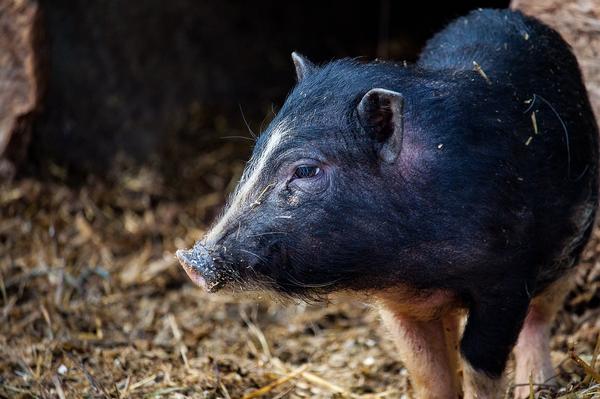
Have you ever dreamed of having a pig as a pet, but don't have the space for a farm?
Well, guess what?
You’ve come to the right place!
Because let’s be honest, we all want a unique and adorable pet that doesn't require acres of land. 🐷
And I get it, you’re hopeful to provide good care and companionship to a tiny pig right in the comfort of your own home.
Trust me, I've been there too.
So, sit tight and get ready to discover the secrets of keeping a micro pig indoors.
Let's dive in!
Creating a Safe and Suitable Home Environment
Creating a safe and suitable home environment for your micro pig requires careful consideration.
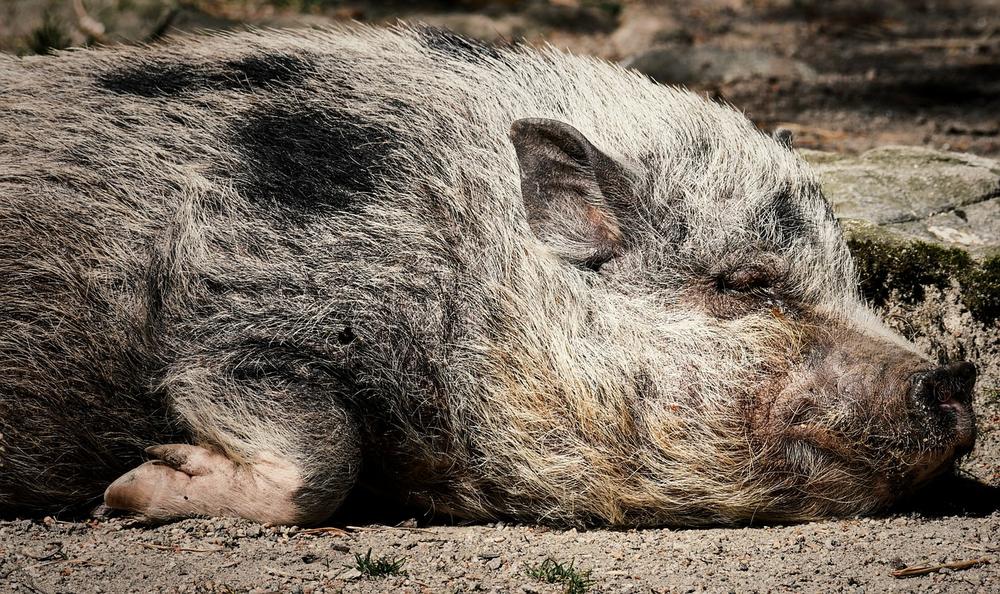
Here are some practical tips to help you create the perfect space for your pig:
- Use baby gates or barriers to block off areas where your pig may not be allowed. This will help prevent accidents and keep your pig safe.
- Remove tripping hazards indoors, as micro pigs have poor eyesight. Ensure that there are no objects or clutter that can cause injuries.
- Provide regular medical checkups and vaccinations for your pig to ensure their good health and well-being.
- Implement quarantine measures when introducing new pigs to your home to avoid overcrowding and reduce the risk of spreading diseases.
- Choose suitable flooring for indoor areas to minimize the risk of slipping or causing discomfort to your pig's hooves.
- Outdoor enclosures should provide sufficient space, security, shade, ventilation, and access to hay for warmth during colder months.
- Make sure that the vegetation in your pig's outdoor enclosure is free from harmful plants and chemicals.
- Comply with local laws and regulations regarding keeping micro pigs as pets.
- Maintain proper hygiene and biosecurity standards to prevent the spread of diseases.
- Consider using strong barriers made of heavy gauge wire and wood rather than crates or dog kennels, as micro pigs can charge or root.
By abiding by these instructions, you can establish a secure and pleasant atmosphere for your miniature pig to flourish within.
Main points I'll expand upon further down this article:
- Micro pigs may not stay small, their size can vary.
- Price range for miniature pigs depends on various factors.
- Prevent breeding between intact males and females.
- Spay females between 4-6 months and neuter males between 8-12 weeks.
- Pigs need care and companionship to prevent boredom and loneliness.
- Aggression in pigs may vary depending on breed, age, and health.
- Consider a companion pig for interaction if you're often away.
- Feeding options include natural foods and manufactured pig pellets.
- Apply for a license to take your pig outside and renew annually.
- House training supplies, proper feeding, and record keeping are important.
And now, let's delve into some important aspects of owning a micro pig as a pet and the care they require to ensure their well-being and happiness!
Are Micro Pigs Good Pets?
Micro pigs can form strong bonds with their owners.
They are not just cute animals to look at, but they can also be loyal and affectionate companions.
These pigs are bred to be smaller than commercial pigs, making them great pets for people who want a pig but don't have a big farm. However, you ought to note that the growth and size of micro pigs can vary depending on the breed.
So, even though they may start out small, there's no guarantee they will stay that way.
Just keep that in mind when considering getting one as a pet.
Proper care is crucial for the health of micro pigs.
Taking care of a micro pig involves some details to consider.
The price range for these miniature pigs can vary based on factors like breed, breeder, age, and trained ability. So, if you're looking to add one to your family, be prepared to do some research and possibly spend a bit of money.
Also, you should take proper precautions for their health. Spaying female pigs between 4 to 6 months and neutering males between 8 to 12 weeks can prevent aggressive behavior and reproductive cycle-associated problems.
Pigs need care, attention, and companionship, just like any other pet.
Micro pigs are intelligent creatures that can get bored and lonely without interaction.
So, if you're thinking about getting one, ensure you can provide the necessary companionship.
Here's a tip: keeping a companion pig can be a great solution, especially if you won't always be around. This way, your pig will have someone to interact with and it will help prevent loneliness.
But remember, owning a pig alongside a dog might not be the best idea. Pigs may trigger predator-prey-like behavior in dogs, so you need to consider their compatibility.
You have two choices in terms of providing food for your micro pig:
Natural foods or manufactured pig pellets.
Both options can be suitable, but pig pellets tend to provide more nutritional value with added vitamins and minerals.
So, if you're considering getting a micro pig, make sure you're ready to give them the care they need and potentially deal with some unexpected growth spurts.
And now, let's talk about the importance of outdoor time for your micro pig and how you can effectively train them to go potty outside.
It's an essential aspect of their well-being and can make a huge difference in their all in all happiness and behavior...
How to Successfully Train Your Mini Pig to Use Outdoor Potty Spots
If you want to train your mini pig to use outdoor potty spots, it won't be easy. But don't worry, with the right approach, you can succeed.
Here's what you need to know:
- Take your pig outside regularly, especially after they eat or when they show signs of needing to go. You need to be consistent and help them learn where they should do their business.
- When your pig goes in the right spot, reward them with treats. Positive reinforcement works wonders! They'll associate going in the designated potty area with something good and will want to do it again.
- If your pig prefers it, consider using indoor potty boxes. Some pigs feel more comfortable this way, so give them that option to prevent accidents indoors.
- Make sure you have a license from APHA to take your pig outside legally. This shows you're a responsible owner who follows local regulations.
- Bear in mind that there may be health risks that affect your pig's willingness to go outside. Extreme weather or certain substances in the environment might make them hesitate. Be aware and take precautions.
Every pig is different, so be patient and adaptable in your training methods.
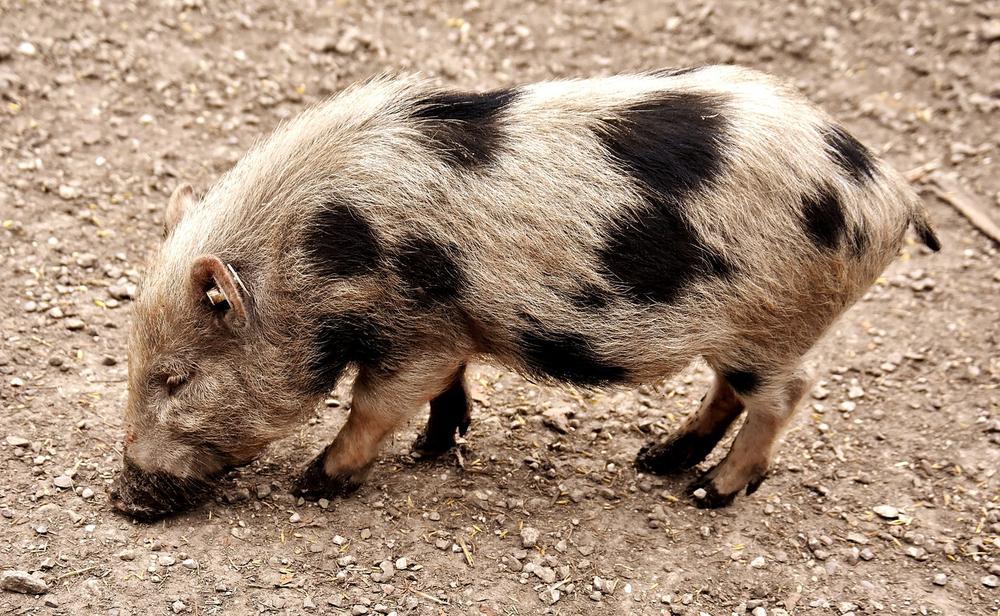
With consistent effort and positive reinforcement, you can teach your mini pig to use outdoor potty spots effectively. 😊
In summary, as you work on training your mini pig to use outdoor potty spots, remember that every pig is different.
It may take patience and adaptability, but with consistent effort and positive reinforcement, you can teach your mini pig to use outdoor potty spots effectively.
And if you're also looking for effective methods of disciplining your mini pig and addressing any behavioral issues, I highly recommend checking out my article How to Discipline a Mini Pig
Essential Supplies for Mini Pig House Training
Choose the right supplies for house training
Ensure you possess the correct equipment when teaching your mini pig to be potty trained.
Start by setting up an indoor potty area for your pig - it can be a litter box or a grass pad covered with absorbent materials.
Don't forget, this area should be easily accessible for your piggy.
But wait, there's more.
Feed your pig a balanced diet
Instead of giving your pig just any scraps or animal-based goodies, provide them with a well-rounded diet.
Look for pig-specific food that will give your pet all the nutrients they need.
If you're unsure about what to feed your pig, reach out to APHA for guidance.
They'll point you in the right direction.
And here's an important tip...
Keep track of important information
You should keep tabs on your pig's details.
Make sure to note their daily activities, identification information, and anything else relevant.
By maintaining thorough records, you'll always have the necessary information at hand.
Oh, and one more thing...
Include fruits, veggies, grains, and cooked beans in your pig's diet. Just be cautious when it comes to toxic beans - safety first, folks.
For more detailed guidance and assistance on these topics, check out the provided links.
Trust me, they'll come in handy!
Are Micro Pigs Destructive?
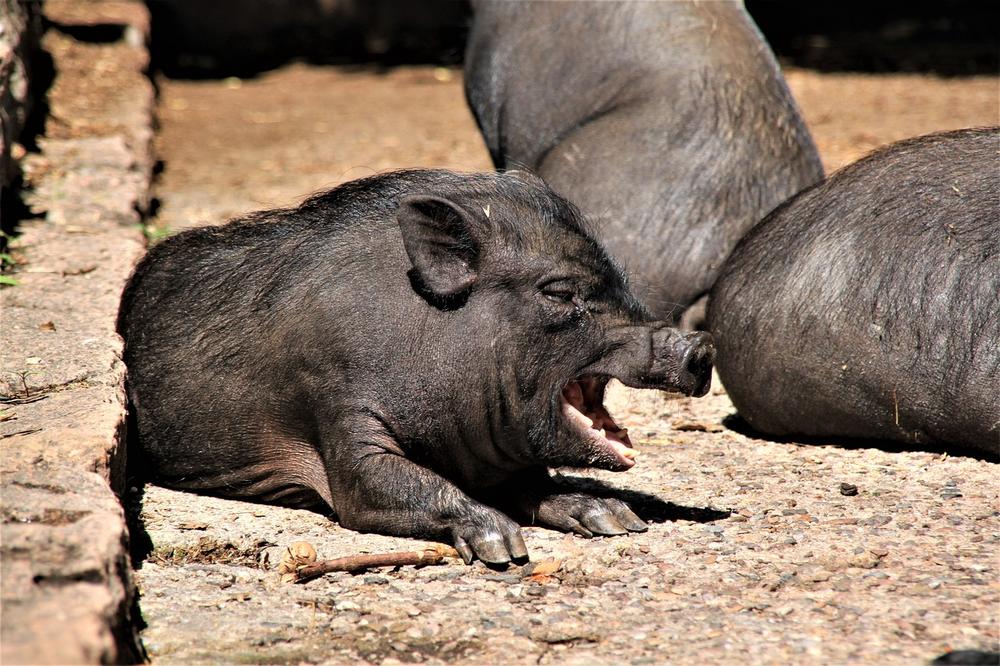
Are micro pigs destructive?
Let's see:
- Give them the right toys and activities to keep them from wrecking stuff. It'll satisfy their natural rooting urge.
- Taking good care of them and teaching them the ropes is essential to stop them from causing havoc. Set clear rules and use positive reinforcement.
- Besides taking care of their food, water, and housing, you gotta keep track of their movements and paperwork for legal reasons.
- When a pig kicks the bucket, ensure you dispose of it properly and legally, without having to report it through eAML2.
- Indoor male pigs can get all rowdy when searching for female pigs. Keep them entertained and mentally stimulated to prevent this.
- Don't leave pigs alone for too long. Boredom can lead to destruction. Spend time with them regularly and ensure they have plenty of things to occupy themselves.
If you take good care of micro pigs, they'll be well-behaved buddies!
What Else Can I Train a Mini Pig to Do?
Train your mini pig with positive reinforcement techniques just like cats or dogs.
Teaching basic obedience commands, such as sit, stay, and come, is crucial for the well-being of your pig.
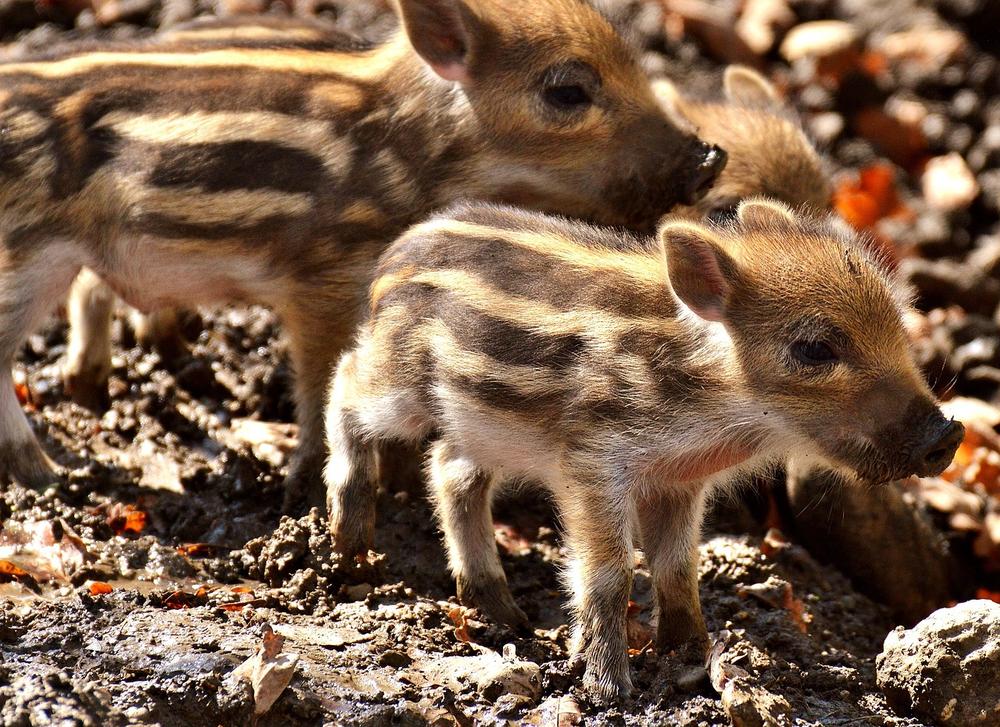
Using the treat reward system will keep them happy and well-adjusted during training.
Indoor enrichment activities are also essential for their overall happiness and fulfillment. By utilizing positive reinforcement and offering treats as rewards, you can effectively teach your mini pig these commands.
This creates a positive and enjoyable training experience for both you and your pet, ensuring a strong bond between you.
And that's all for today folks.
I'm so glad you made it to the end of my blog post! I just want to ask if you enjoyed reading it. I worked really hard to make sure my blog posts are detailed and helpful. It's definitely time-consuming, but in a good way. If you could do me a huge favor and click on any of the social sharing icons to share this post with others, I would be immensely grateful. Thanks a million!
Until next time,
-Chris Campbell